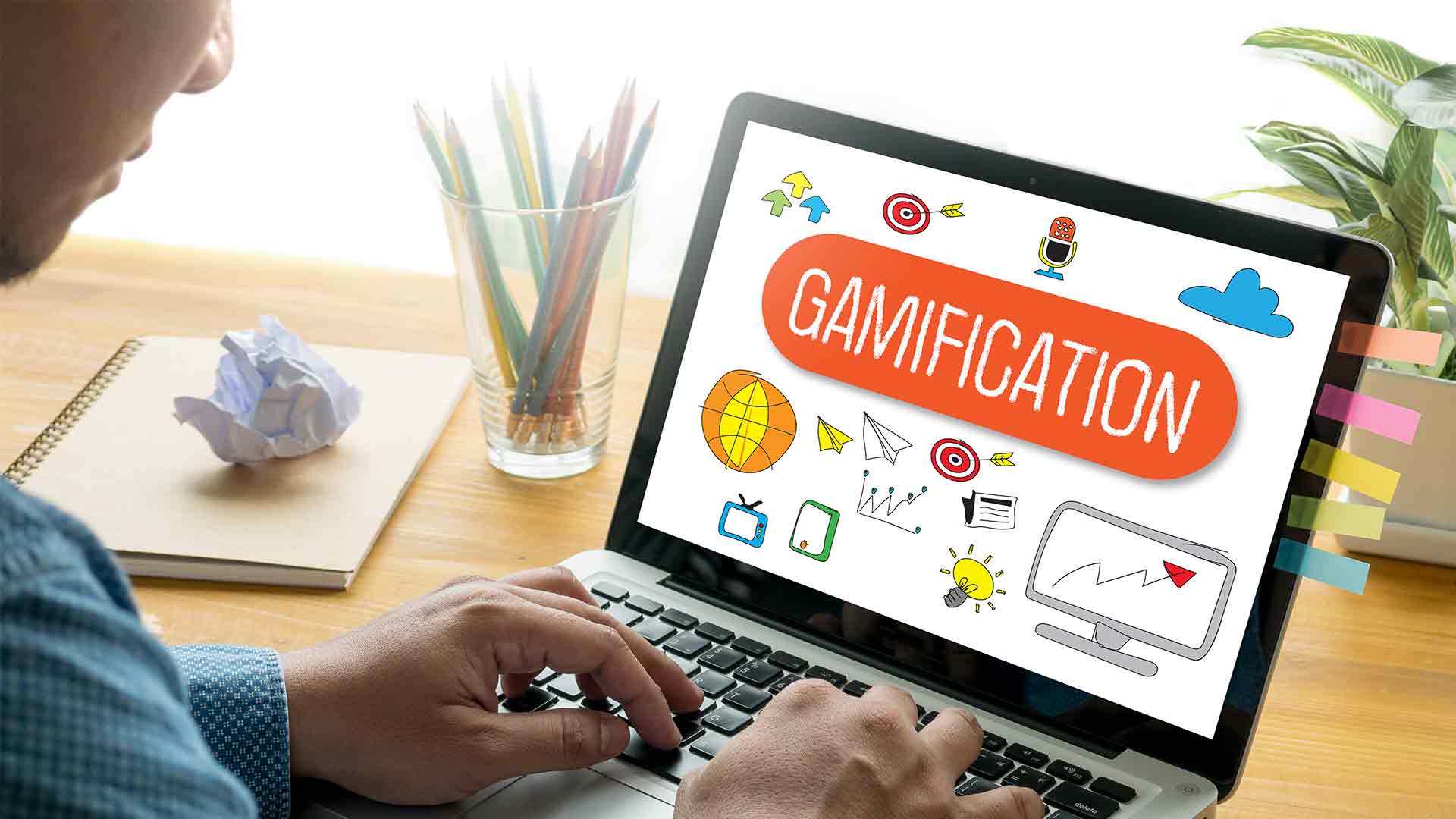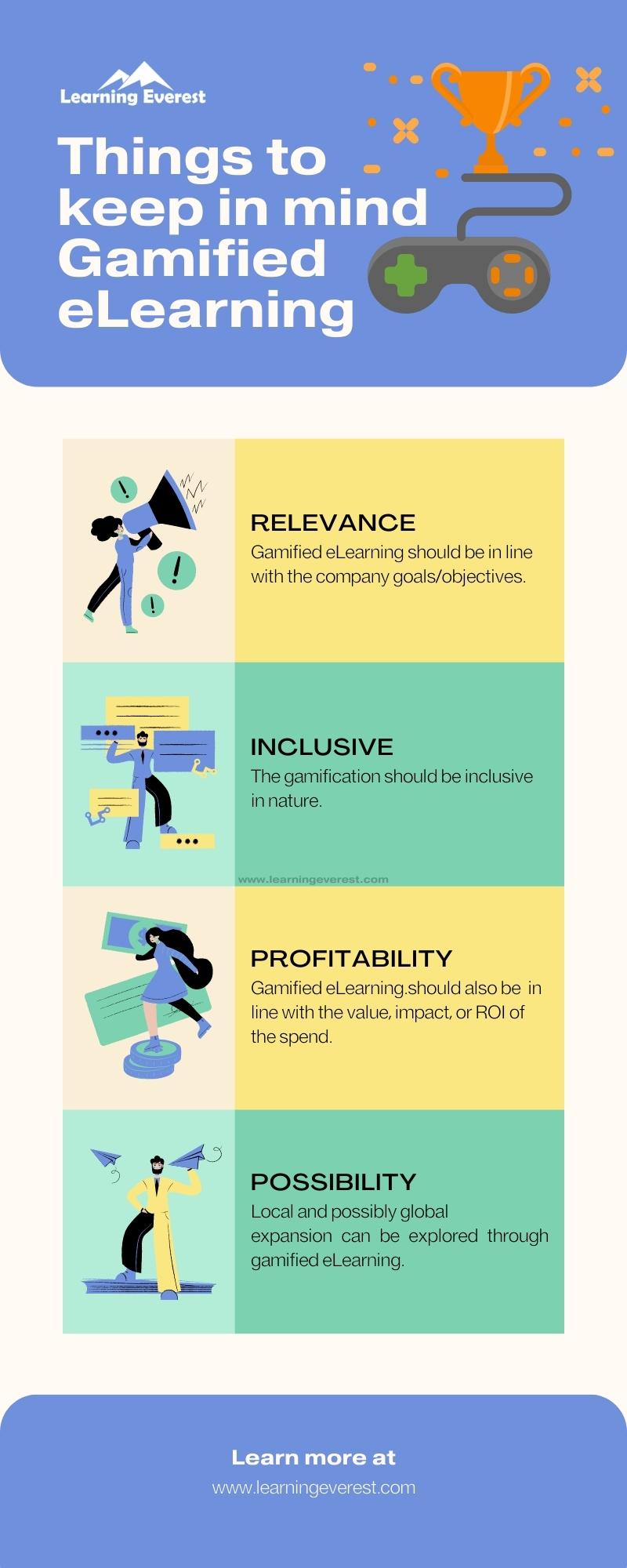Gamification in eLearning programs is fast emerging as an effective technique to engage learners. 71% of employees believe that gamification leads to an increase in energy levels, and 66% of employees say that gamification at work reduces their stress levels (eLearning Industry, 2020). It has found its place for meeting specified learning outcomes. In this article, we will share six examples of how you can create immersive learning and development experiences using gamification for varied training needs like induction and onboarding, professional skills enhancement training, compliance training, soft skills enhancement training, and behavioral change programs.
But, first and foremost, why do we need gamification in eLearning programs?
Table of Contents
The benefits of gamification in eLearning programs
Gamification in eLearning uses gaming principles and key elements to meet the required learning objectives. Gamification techniques leverage people’s basic desires for interaction, learning, mastery, competition, achievement, rank, self-expression, altruism, or closure. Gamification uses rewards for players who accomplish desired tasks or competitions to engage players.
Types of rewards include points, badges, levels, progress bars, or providing the player with virtual currency. Making the achievements for accomplishing tasks visible to other players or providing leaderboards encourages players to compete.

Benefits of Gamification in eLearning Programs
Therefore, adding gamification in eLearning offers a learning journey to have fun as you learn, and the learners welcome it. However, L&D teams who invest in gamification in eLearning still have reservations about the value, impact, or ROI of this spend. However, the fact remains that the success of any training strategy is determined by the effectiveness of its application. If you craft a gamification in eLearning that can capture and retain the learners’ attention, challenge and engage them, ensure they complete the journey, and teach them, you will have high-impact training that delivers the desired impact.
As a result, well-designed gamification-based training provides the following values:
- High learner engagement
- Immersive approach
- High Recall
- Better retention
- Improved application of the acquired knowledge on the job
- Reinforcement
- Challenges that stimulate a review of primary learning resources
- Practice and proficiency gain
- Trigger change in thinking
- Influence behavioral change

Gamification in eLearning programs
Do you know?
Learners who were educated with challenge-based gamification raised their performance by up to 89.45% compared to those who only received lectures (ScienceDirect, 2020).
So, to meet these gains, gamified eLearning uses the following eight elements.
- Challenges: Challenges are given to map the learning objectives or learning goals of the overall training.
- Levels: These map the learning journey, and as the learner goes through each level, it represents a step up in proficiency for them.
- Instant feedback: This helps learners know how far they are from their learning objectives, so they can adopt the necessary measures to improve their performance.
- Scores: They are indicators of their performance and are closely aligned to offering gratification and a sense of accomplishment.
- Points and Badges: As the learners go through the learning path and certain clear levels, they are given badges. These reflect affirmations for their significant achievements.
- Leaderboards: They provide a visual representation of the overall progress, including against other learners. The analytics keeps learners connected to the learning journey and aligned to meeting their terminal objectives.
- Competition: This can be leveraged effectively as it helps learners assess where they stand against other peers or competing teams.
- Collaboration: This feature not only facilitates team-building but also enables learners to leverage the support of peers or guidance from experts to meet their goals.
You can blend all these gameplay elements with complex workplace scenarios and create immersive and interactive gamified training environments.
Moreover, gamification goes beyond physical rewards and promotes a mindset of constant achievement. It is a way to motivate employees when taking an eLearning module and ensure they are engaged.
Examples of Gamification in eLearning training programs
Gamification in eLearning can enhance learner engagement and retention, making eLearning training programs more effective. Here are some examples:
1. Competitive Games
Competitive games are where players or teams compete against each other to achieve a specific goal or objective. They can be a fun way to challenge oneself and develop skills, but it’s important to remember to play fair and be a good sport. You can create competitive games to enable learners to acquire the targeted skills and apply their knowledge in the real world.
2. Scenario-based Games
Scenario-based games are where the player is presented with a scenario or situation and must make decisions based on that scenario. These games can be educational or entertainment-based. The player’s decisions determine the outcome of the game, making it an interactive and immersive experience. Examples of scenario-based games include role-playing games, simulation games, and choose-your-own-adventure games. Scenario-based games empower learners to think and act most logically in a virtual environment.
3. 2D/3D Avatar-based games
2D/3D avatar-based games are games where players create and control a character or avatar in a virtual world. These games often feature social interactions, exploration, and gameplay mechanics such as quests, battles, and customization options for the avatar. You can develop 2D/3D games and create interactive avatar games to make them real-life-like.
4. Serious Games
Serious games are designed for purposes other than entertainment, such as education, training, or health improvement. They combine game mechanics with educational content to engage and motivate players to achieve specific learning objectives. You can create serious games that make the training fun yet practical.
5. Mind Mapping Games
Mind mapping games are a fun and creative way to exercise your brainstorming skills and improve memory retention. These games allow you to visually organize your thoughts, ideas, and concepts in a non-linear way, making it easier to see connections and patterns between them. Whether you’re looking to boost your productivity, enhance your creativity, or have fun, mind-mapping games are a great way to achieve your goals. Map out new ideas, explore concepts, and enable brainstorming sessions.
6. Decision-Making Games
Decision-making games require players to make choices that affect the outcome of the game. These games are a great way to exercise critical thinking skills and can be fun and engaging in passing the time. Therefore, adding these games to eLearning will enable learners to make decisions individually or as a team. Team thinking games turn them into influential decision-makers and communicators.
Moreover, with interactive dashboards, you can analyze the effectiveness of the activity and assess the performance of the learners. By embedding features such as leaderboards, virtual badges, and other rewards in the game-based learning module, you can deliver better learning outcomes. Map the game-based learning modules to your organizational goals for maximum effectiveness.
Infographic

Gamification in eLearning
Was this article helpful?
The following articles can also be a helpful guide as you get started:
- What is Gamification, and why is it so important to a modern educator?
- Gamification in Articulate Storyline
Or, talk to us to create engaging and innovative gamification in eLearning modules for your employees. BOOK A DEMO TODAY!
Knowledge check!
Frequently Asked Questions (FAQs)
What is the importance of gamification in eLearning?
Gamification in eLearning leverage people’s basic desires for interaction, learning, mastery, competition, achievement, rank, self-expression, altruism, or closure.
What is gamification in eLearning?
Gamification in eLearning uses gaming principles and critical elements to meet the required learning objectives.
What is an example of gamification in learning?
Scenario-based Games
Scenario-based games are where the player is presented with a scenario or situation and must make decisions based on that scenario. These games can be educational or entertainment-based. The player’s decisions determine the outcome of the game, making it an interactive and immersive experience. Examples of scenario-based games include role-playing games, simulation games, and choose-your-own-adventure games. Scenario-based games empower learners to think and act most logically in a virtual environment.





